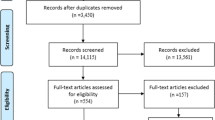Abstract
The number of cancer survivors is increasing steadily due to an aging population, continuing improvement in early detection, and treatment. Comparative effectiveness studies and clinical trials are being done to assess late effects of treatment and health-related quality of life. This is in addition to long-term follow-up to assess survival. The aim of the review was to summarize the literature on commonly used quality of life instruments for patients with gynecological cancers with special focus on patient reported outcomes. A literature review was done to summarize the commonly used health-related quality of life instruments in gynecological cancer survivors. Most items assess general quality of life, sexual function, and/or treatment-related toxicity. The commonly reported instruments are the European Organisation for Research and Treatment of Cancer Quality of Life Questionnaire Core 30 (EORTC QLQ C30) with disease specific modules for cervix, ovary, and endometrium. Another tool is the Functional Assessment of Cancer Therapy (FACT) questionnaire with similar disease specific modules. The questionnaires were accessed with permission from these organizations. These instruments typically have about 10–30 questions that assess treatment related bowel and bladder toxicity. This is connected to the patients’ self-reported quality of life, generally ranked using a 5-point scale. Length and emphasis vary in different questionnaires. The validated tools in cancer populations allow better quantification and assessment of quality of life. However, there may be limitations. Some of the general instruments may be too broad to assess treatment-related long-term side effects. Others may be too narrow to generalize closely related patient groups. Also, some questions may not be culturally appropriate in certain situations.
Similar content being viewed by others
References
van Leeuwen M, Husson O, Alberti P, Arraras JI, Chinot OL, Costantini A, Darlington AS, Dirven L, Eichler M, Hammerlid EB, Holzner B, Johnson CD, Kontogianni M, Kjær TK, Morag O, Nolte S, Nordin A, Pace A, Pinto M et al (2018) Understanding the quality of life (QOL) issues in survivors of cancer: towards the development of an EORTC QOL cancer survivorship questionnaire. Health Qual Life Outcomes 16(1):114. https://doi.org/10.1186/s12955-018-0920-0
Devlin NJ, Brooks R (2017) EQ-5D and the EuroQol Group: past, present and future. Appl Health Econ Health Policy 15(2):127–137. https://doi.org/10.1007/s40258-017-0310-5
Ferrell BR, Dow KH, Grant M (1995) Measurement of the quality of life in cancer survivors. Qual Life Res 4(6):523–531. https://doi.org/10.1007/BF00634747
Cella DF, Tulsky DS, Gray G, Sarafian B, Linn E, Bonomi A, Silberman M, Yellen SB, Winicour P, Brannon J et al (1993) The Functional Assessment of Cancer Therapy scale: development and validation of the general measure. J Clin Oncol 11(3):570–579. https://doi.org/10.1200/JCO.1993.11.3.570
Ware JE Jr, Sherbourne CD (1992) The MOS 36-item short-form health survey (SF-36). I. Conceptual framework and item selection. Med Care 30(6):473–483
Anacak Y, Yalman D, Ozsaran Z, Haydaroğlu A (2001) Late radiation effects to the rectum and bladder in gynecologic cancer patients: the comparison of LENT/SOMA and RTOG/EORTC late-effects scoring systems. Int J Radiat Oncol Biol Phys 50(5):1107–1112. https://doi.org/10.1016/s0360-3016(01)01527-9
Freites-Martinez A, Santana N, Arias-Santiago S, Viera A (2021) Using the common terminology criteria for adverse events (CTCAE - Version 5.0) to evaluate the severity of adverse events of anticancer therapies. Actas Dermo-Sifiliogr 112(1):90–92. English, Spanish. https://doi.org/10.1016/j.ad.2019.05.009
Thirlaway K, Fallowfield L, Cuzick J (1996) The Sexual Activity Questionnaire: a measure of women’s sexual functioning. Qual Life Res 5(1):81–90. https://doi.org/10.1007/BF00435972 Erratum in: Qual Life Res 1997 Aug;6(6):606
Meston CM (2003) Validation of the Female Sexual Function Index (FSFI) in women with female orgasmic disorder and in women with hypoactive sexual desire disorder. J Sex Marital Ther 29(1):39–46. https://doi.org/10.1080/713847100
Flynn KE, Lin L, Cyranowski JM, Reeve BB, Reese JB, Jeffery DD, Smith AW, Porter LS, Dombeck CB, Bruner DW, Keefe FJ, Weinfurt KP (2013) Development of the NIH PROMIS ® sexual function and satisfaction measures in patients with cancer. J Sex Med 10:43–52. https://doi.org/10.1111/j.1743-6109.2012.02995.x
Author information
Authors and Affiliations
Corresponding author
Ethics declarations
Conflict of Interest
The authors declare no competing interests.
Additional information
Publisher’s Note
Springer Nature remains neutral with regard to jurisdictional claims in published maps and institutional affiliations.
Rights and permissions
Springer Nature or its licensor (e.g. a society or other partner) holds exclusive rights to this article under a publishing agreement with the author(s) or other rightsholder(s); author self-archiving of the accepted manuscript version of this article is solely governed by the terms of such publishing agreement and applicable law.
About this article
Cite this article
Ramachandran, A., Kuriakose, S., Vimalraj, S. et al. A Review of Commonly used Health-Related Quality of Life instruments in Gynecological Cancer Survivors. Indian J Surg Oncol 14, 935–938 (2023). https://doi.org/10.1007/s13193-023-01807-8
Received:
Accepted:
Published:
Issue Date:
DOI: https://doi.org/10.1007/s13193-023-01807-8




